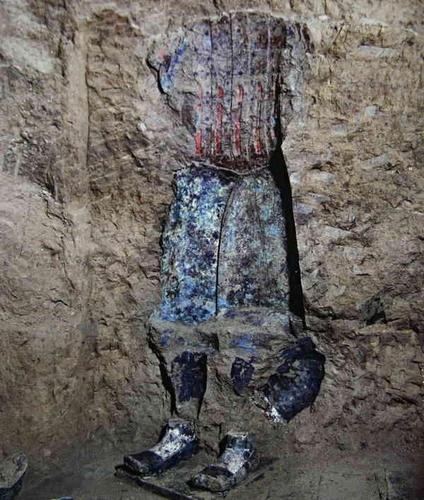
The Secrets of the Terracotta Army: Why Were They Buried Underground?
Deep beneath the surface of Xi'an, China, lies an army frozen in time – the Terracotta Army. Thousands of life-sized soldiers, each with unique features, stand guard over the tomb of China's first emperor, Qin Shi Huangdi. But why was such an immense army buried underground?
Guardians of Eternity: Protecting the Emperor in the Afterlife
The answer lies in ancient Chinese beliefs about the afterlife. Qin Shi Huangdi, obsessed with immortality, envisioned ruling his vast empire even after death. The soldiers, meticulously crafted from terracotta clay, were not meant to be seen by living eyes. They were positioned in a battle formation, their purpose to protect the emperor in the afterlife and ensure his continued dominion over the universe.
The Emperor's Immortal Army: A Testament to Power and Ambition
Scientists believe the creation of this clay army commenced around 246 B.C., coinciding with Qin Shi Huangdi's ascension to the throne at the tender age of 13. The sheer scale of the project, spanning nearly four decades, reflects the emperor's ambition and the importance placed on preparing for the afterlife. Over 700,000 laborers, artisans, and craftsmen toiled tirelessly, molding clay, firing kilns, and painting intricate details on each soldier, horse, and chariot.
A Glimpse into the Past: The Significance of the Terracotta Army
The Terracotta Army, rediscovered in 1974, offers a captivating window into the military might and cultural practices of ancient China.
Military Prowess:
The army's strategic arrangement, diverse weaponry, and meticulous ranks speak volumes about the Qin dynasty's military prowess.
Social Hierarchy:
Variations in height, uniform, and facial features provide valuable insights into the social hierarchy of the time. Generals, archers, infantrymen – each played a distinct role, mirrored in their terracotta counterparts.
Artistic Mastery:
The intricate craftsmanship, from the lifelike expressions to the detailed armor, showcases the exceptional skill and artistry of the Qin dynasty.
More on the Terracotta Army: A Wonder of the Ancient World
- The army, built over 2,200 years ago, remained hidden for centuries, shielded from the ravages of time.
- It is estimated that over 8,000 soldiers, 130 chariots with 520 horses, and 150 cavalry horses have been unearthed, with thousands more believed to remain buried.
- The Terracotta Army is a UNESCO World Heritage site, captivating visitors with its grandeur and historical significance.
FAQs
1. What is the purpose of the Terracotta Army?
The Terracotta Army was created to protect and serve Emperor Qin Shi Huangdi in the afterlife, ensuring his continued rule.
2. When was the Terracotta Army discovered?
The Terracotta Army was rediscovered in 1974 by farmers digging a well.
3. Why is the Terracotta Army significant?
Beyond its sheer size and artistry, the Terracotta Army provides invaluable insights into the military practices, social structure, and beliefs of ancient China.